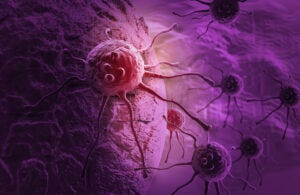August 11, 2022

Suzhou Innovent Biologics will develop two Sanofi cancer candidates in China with Sanofi investing $305 million in Innovent at a 20% premium to current prices.
The drug candidates are (1) tusamitamab ravtansine, an anti-CEACAM5 antibody-drug conjugate in Phase III trials, and (2) non-alpha IL-2 in Phase II trials (combined with Innovent’s PD-1, sintilimab).
Innovent will be responsible for China clinical development of both Sanofi candidates, but will commercialize only tusamitamab ravtansine. Sanofi will be eligible for $81 million in milestones on tusamitamab ravtansine, and Innovent will receive up to for $61 million in IL-2 milestones.

Image: Stock Photo Secrets
Sanofi has made an initial equity investment of €300 million ($305 million) in Innovent but, subject to a future agreement, could acquire an additional €300 million of Innovent shares at the 20% premium.
Tusamitamab ravtansine
SAR408701 (tusamitamab ravtansine) is a potential first-in-class antibody-drug conjugate (ADC) targeting CEACAM5 (carcinoembryonic antigen-related cell adhesion molecule 5), a cell-surface glycoprotein that is highly expressed in non-small cell lung cancer, gastric cancer and other cancers. SAR408701 is currently in a global Phase III study for second-line NSCLC globally including China, and in global Phase II studies in additional indications including first-line NSCLC, gastric cancers and other solid tumors.
Innovent will be responsible for developing and commercializing tusamitamab in multiple oncology indications in China while Sanofi will be entitled to receive up to $81 million in development milestones plus royalties on net sales.
SAR444245 (IL-2)
SAR444245 is a potential first-in-class reprogrammed, site-directed, single PEGylated, recombinant human IL-2 (rIL-2) variant with extended half-life that specifically binds to the low-affinity IL-2 receptor but lacks binding affinity for the alpha chain of the high-affinity IL-2 receptor. SAR444245 (IL-2) is currently being tested in global Phase II studies for skin cancers, gastrointestinal cancer, NSCLC/mesothelioma, head and neck tumors, and lymphoma.
Innovent and Sanofi will jointly explore the development of SAR444245 in China for various cancers, with Innovent leading clinical development. Sanofi will be the sole Marketing Authorization holder for both assets and will be responsible for SAR444245 commercialization. Innovent will be entitled to receive up to $61 million in development milestones plus royalties.
Michael Yu, chairman and CEO of Innovent, said, “This strategic collaboration with Sanofi, a leading global pharmaceutical company, opens the pathway to great synergy for accelerating the pace of innovation. This pioneering partnership will leverage the synergy between Sanofi and Innovent’s pipeline and R&D resources with the mutual aim to address major unmet medical needs for cancer patients. We hope this agreement will be a great start of the two parties’ long-term partnership, and we look forward to bringing more innovative therapies to patients.”
John Reed, global head of R&D at Sanofi, said, “This strategic collaboration with Innovent will not only accelerate the development, market access and future commercialization of two of our key oncology medicines in selected combinations with sintilimab, but also bolster our overall presence in oncology in China. We look forward to a successful partnership with Innovent, one of the most innovative companies in China, and to leveraging their development capabilities and market leadership in the country.”
Innovent’s pipeline contains 34 assets for needs in cancer, metabolic, autoimmune disease and other major therapeutic areas. Seven products are approved for use in China: Tyvyt (sintilimab injection), Byvasda (bevacizumab biosimilar injection), Sulinno (adalimumab biosimilar injection), Halpryza (rituximab biosimilar injection, Pemazyre (pemigatinib oral inhibitor), olverembatinib (BCR ABL TKI) and Cyramza (ramucirumab). Another three assets are under NMPA NDA review, four are in Phase III or pivotal clinical trials, and more than 20 candidates are in clinical studies.
A version of this article was published in ChinaBioToday on August 5, 2022
About the Author
You May Also Like



